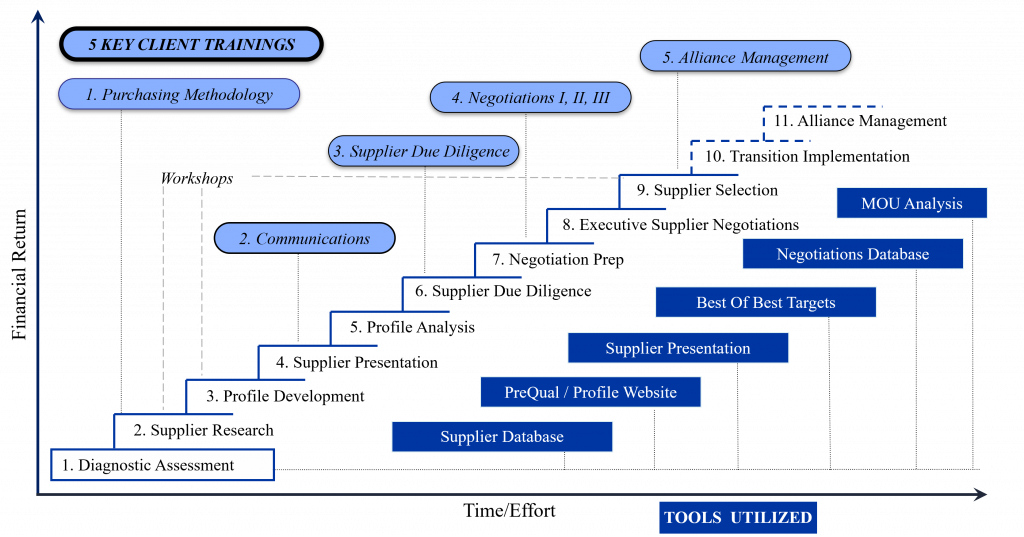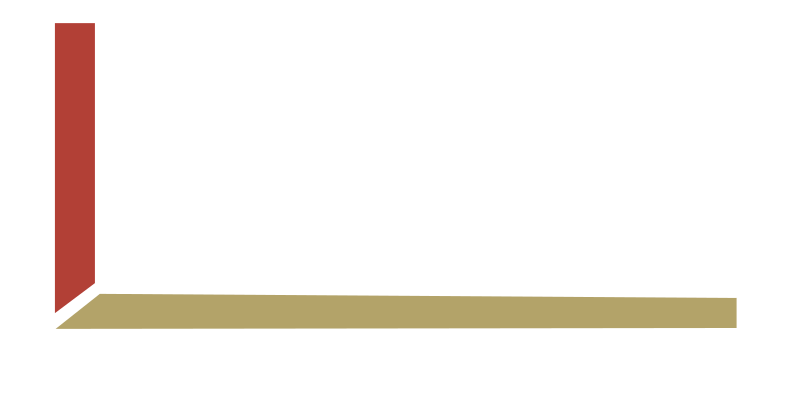Our 11-Stage Gateway System
From early strategic planning to final implementation, LVP supports you at every stage. We track success in real cost reductions and client satisfaction, ensuring our Consulting Services drive tangible growth for your business

Step 1: Evaluating Potential Opportunities
Client teams start by collecting spend data, consulting with various departments, and analyzing current capabilities to accurately gauge potential benefits. This data-driven approach helps both LVP and our clients identify, evaluate, and prioritize cost savings, training needs, and other growth opportunities
Step 2: Vendor Market Analysis
Our experts scour the global market to identify ideal suppliers tailored to each client's unique requirements. This vital phase enhances competitive benchmarking, drives supplier diversification, and strengthens negotiation leverage by evaluating both new potential partners and existing vendors.
Step 3: Crafting Supplier Profiles
Clients develop RFQ and RFI profiles which solicit the specific information needed for the cross-functional client team to make data-driven decisions on a supplier’s ability to be a viable longterm supplier. This is the initial phase of data collection from suppliers, which provides market intelligence on the category and is leveraged to determine best practices.
Key Activities: Internal Site Visits-Detailed Category Analysis | RFQ Development | RFI Development
Step 4: Supplier Showcase
Client leadership and key stakeholders convene to generate momentum and present the strategic sourcing initiative to supplier executives, fostering competitive dynamics and knowledge-sharing among vendors.
Step 5: Supplier Profile Evaluation
Clients assess finalized supplier profiles through standardized comparison to shortlist vendors, gain market insights, and establish tailored baseline goals for negotiations.
Step 6: On-Site Supplier Evaluations
While cost matters, quality is equally critical. Clients conduct on-site visits at shortlisted suppliers' facilities—both new and current—through detailed tours and direct meetings to validate profiles, assess capabilities, strengthen partnerships, and expand market insights.
Step 7: Pre-Negotiation Planning
Client teams undergo weeks of training and workshops to ready themselves for negotiations. Insights from supplier profiles and facility tours establish elite benchmarks across all key discussion points for the upcoming talks.
Step 8: Supplier Deal Discussions
Client leadership meets with supplier executives to negotiate 30+ key points, assessing each vendor's capacity to fulfill all objectives. Agreed terms are formalized in a Memorandum of Understanding outlining future business conditions.
Step 9: Vendor Award Decision
Client teams analyze all gathered data to choose suppliers providing the optimal balance of lowest total cost and highest overall value for the sourced products/services.
Step 10: Operational Rollout
LVP continues supporting clients during contract execution, collaborating with chosen partners to develop implementation strategies. Stakeholders receive updates through written communications, calls, webinars, and live meetings to ensure project success.
Key Steps: Final Review Sessions | Vendor Selection | Implementation Roadmapping | Stakeholder Updates | Supplier Network Alignment | Partner Onboarding Workshops | Legacy Supplier Transition | New Vendor Integration (Operations & Technical)
Step 11: Partner Performance Oversight
LVP deploys tools, reporting systems, and resources to enable ongoing collaboration and support. Key focus areas include value engineering, new product development, cost reduction, product streamlining, inventory optimization, and quality enhancement teams.
Key Actions: Performance Reviews & Metrics | Cost Reduction Monitoring | Savings Optimization | Product Line Streamlining | Value Engineering Initiatives | Innovation Development


